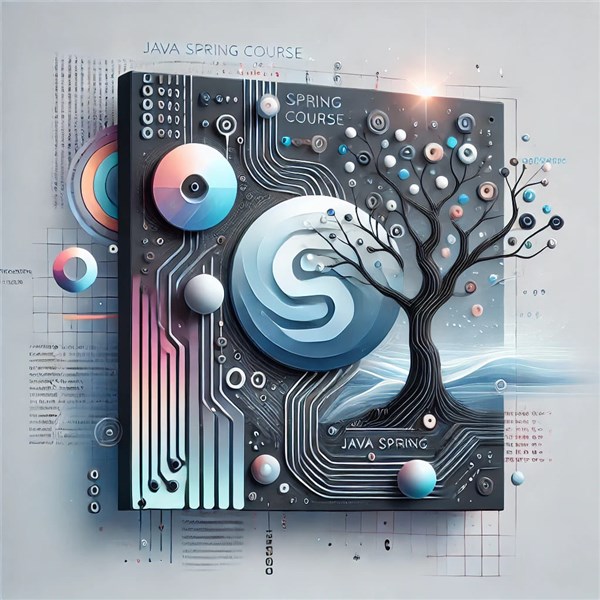
Java Spring Framework is a powerful and versatile tool for building enterprise-grade applications. With features like dependency injection, REST API creation, and integration with popular tools, Spring has become a cornerstone of Java development. If you’re considering enrolling in a Java Spring course, understanding its essentials can help you maximize your learning experience.
This guide will outline what you need to know before starting a Java Spring course, including prerequisites, core concepts, tools, and tips to make the most of your journey.
Why Learn Java Spring?
Spring Framework is widely used in the development of robust, scalable, and secure applications. Here are a few reasons why learning Spring is a valuable skill:
- Industry Demand: Spring Framework is one of the most sought-after skills in Java development.
- Versatility: Spring supports various architectures, from monolithic to microservices.
- Efficiency: With features like Spring Boot, developers can rapidly create applications with minimal boilerplate code.
- Integration: Spring integrates seamlessly with databases, third-party APIs, and messaging platforms.
Prerequisites for Learning Java Spring
Before diving into a Spring course, ensure you meet the following prerequisites:
1. Strong Foundation in Core Java
- Familiarity with concepts like object-oriented programming, collections, exception handling, and multithreading is essential.
- Knowledge of Java 8+ features like lambdas and streams is highly recommended.
2. Understanding of Web Development Basics
- Basic knowledge of web technologies like HTTP, REST, and JSON will make learning Spring MVC and Spring Boot easier.
3. Database Basics
- Understanding SQL and relational database concepts is necessary for working with Spring Data JPA and Hibernate.
4. Build Tools Knowledge
- Familiarity with build tools like Maven or Gradle is helpful for managing dependencies and project configurations.
Core Concepts to Know Before Starting
1. Dependency Injection (DI)
Dependency Injection is the foundation of the Spring Framework. It allows you to manage object dependencies externally, promoting loose coupling and easier testing. Learn the basics of:
- Inversion of Control (IoC)
- Constructor and Setter Injection
2. Spring Modules Overview
Understand the key modules of the Spring Framework and their roles:
- Spring Core: Provides basic DI and IoC functionalities.
- Spring MVC: For building web applications.
- Spring Data JPA: Simplifies database interactions.
- Spring Security: Ensures application security.
- Spring Boot: Speeds up application development with pre-configured templates.
3. Spring Application Context
Spring Application Context is the container that manages the lifecycle of beans. You should know about:
- Bean definitions
- Bean scopes (singleton, prototype, etc.)
- Application context lifecycle
4. Spring Boot Features
Spring Boot simplifies Spring-based development. Key features include:
- Auto-configuration
- Embedded web servers like Tomcat
- Simplified dependency management through spring-boot-starter packages
Tools You’ll Need
To get started with a Java Spring course, set up your development environment with the following tools:
1. Java Development Kit (JDK)
Install the latest JDK (Java 17 or above) to write and compile Java code.
2. Integrated Development Environment (IDE)
Choose a robust IDE like IntelliJ IDEA or Eclipse. These IDEs offer excellent support for Spring projects.
3. Build Tools
- Use Maven or Gradle for managing dependencies and building your project.
- Most Spring Boot projects rely on Maven for dependency management.
4. Database
Set up a database like MySQL or PostgreSQL for working with Spring Data JPA. Use tools like DBeaver for managing your database.
5. Postman or cURL
For testing REST APIs built with Spring Boot, tools like Postman or cURL are invaluable.
What to Expect in a Java Spring Course
A comprehensive Java Spring course will typically cover:
1. Spring Basics
- IoC and DI principles
- Configuring beans in XML, annotations, and Java-based configurations
2. Spring Boot Essentials
- Creating Spring Boot projects
- Understanding the Spring Boot Starter packages
- Exploring application.properties for configuration
3. Building REST APIs
- Using Spring MVC to create RESTful APIs
- Request handling with @Controller and @RestController
- Data exchange using JSON
4. Database Interaction
- CRUD operations with Spring Data JPA
- Using Hibernate for Object-Relational Mapping (ORM)
- Querying databases with JPQL
5. Spring Security
- Authentication and authorization
- Implementing JWT (JSON Web Tokens) for secure APIs
6. Spring Testing
- Writing unit tests for Spring components using JUnit and Mockito
- Testing REST APIs with MockMvc
7. Spring Microservices
- Building and managing microservices with Spring Cloud
- Service discovery using Eureka
- API Gateway with Spring Cloud Gateway
Tips to Succeed in a Java Spring Course
-
Practice Regularly
The best way to learn Spring is by building projects and solving problems regularly. -
Start Small
Begin with simple applications, such as a basic CRUD app, before tackling complex architectures like microservices. -
Use Official Documentation
Refer to the official Spring documentation to clarify concepts and explore advanced features. -
Participate in Community Forums
Join forums or groups where Spring developers discuss issues and share resources. -
Focus on Real-World Applications
Work on real-world projects to understand how Spring is used in enterprise environments.
Conclusion
A Java Spring course is an excellent investment for developers aiming to build scalable, secure, and efficient applications. By understanding the prerequisites, core concepts, and tools required, you can ensure a smooth learning journey and effectively grasp the Spring Framework's capabilities.
Start your Spring learning journey today and unlock the potential to create powerful applications that meet industry demands. With consistent effort and the right resources, you’ll soon master this invaluable skill in the world of Java development.
While there are numerous training providers available, choosing the right one can make all the difference in your learning experience. Koenig Solutions is a leading IT training company, providing certifications in top technology courses, including the Java Spring course. With experienced trainers, comprehensive course content, and flexible training modes, you can be assured of gaining a solid foundation in Java Spring.
So, are you ready to kickstart your journey with the Java Spring course? Get started with Koenig Solutions today and take a major stride towards a successful tech career.







COMMENT